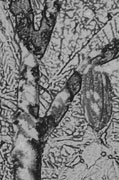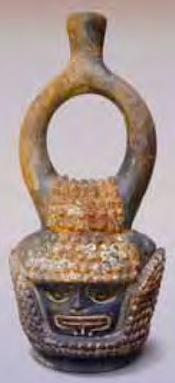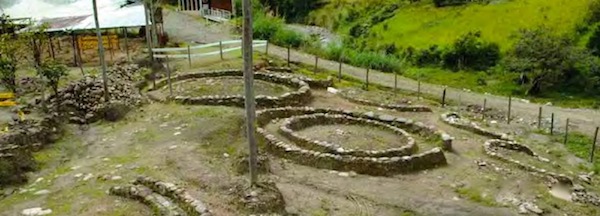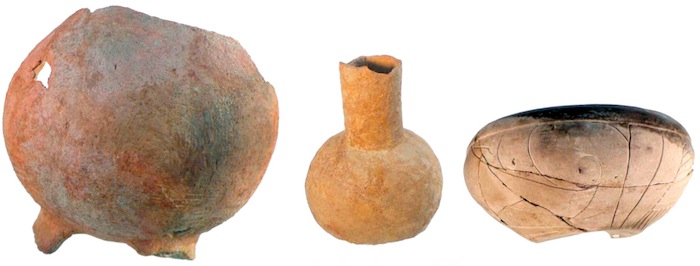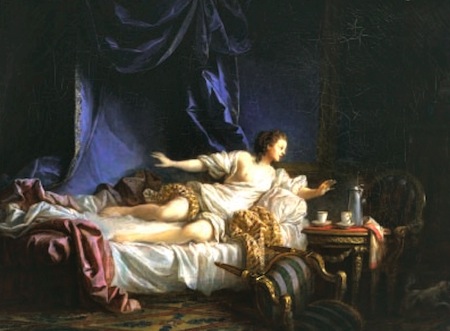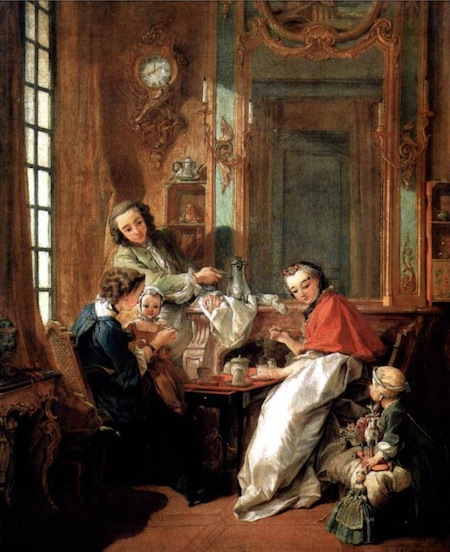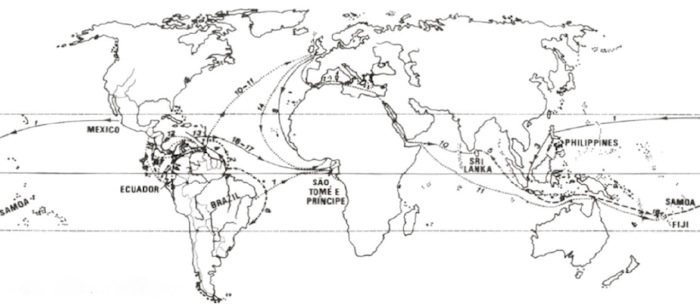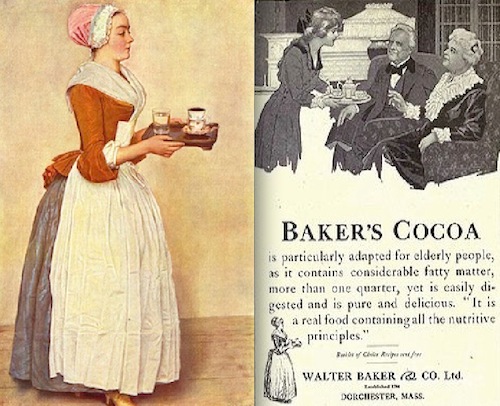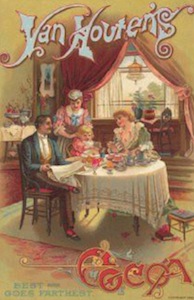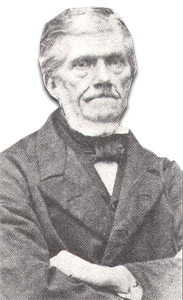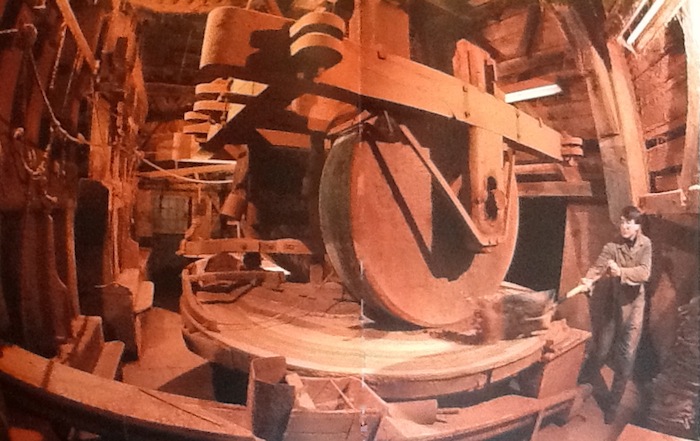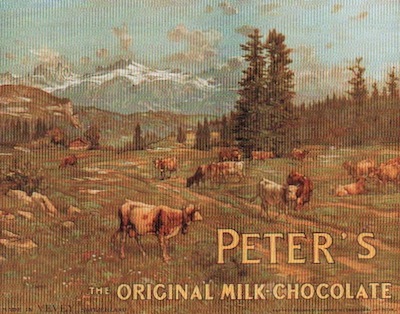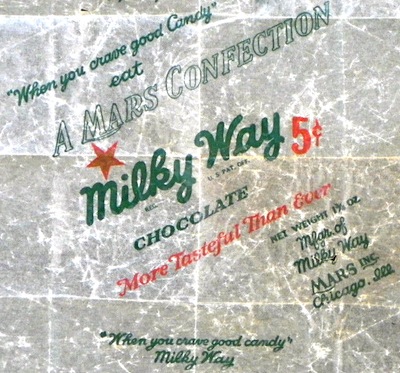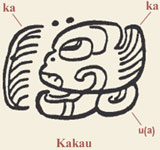Cacáo, cocoa & chocolate have played profond roles in history & in shaping modern globalism. A complex web of contacts, connections, collaborations of commerce & culture – all nodes to the various “C-spots” – in an enormous value chain spanning millennia over thousands of miles involving millions of people. The total effort required to produce & deliver finished-chocolate is planetary & enduring. Here then…
The Nibs of the Matter
10 Ma – current analysis indicates that the species Theobroma cacao, a tree belonging of the Malvaceae family of plants, diverged from its most recent common ancestor 9.9 (7.7–12.9 [95% HPD]) Ma – roughly 10 million years ago – as part of the Andean Uplift during the mid-Miocene Epoch.
10,000 – 15,000 Years BCE – modern formation of the more diversified Theobroma cacao in, all likelihood, the Amazon Rainforest, from whose seeds chocolate would eventually be derived; the earlier date would coincide with the founding populations that peopled the Americas.
7,900 BCE – The Popol Vuh, a sacred text of Mesoamericans, appears to give a long count calendar date for the first sprout of maize & – by symbolic though not necessarily historical association – cacáo, as 1 Manix (manixliterally ‘worker with the Earth’), celebrating their invention on Day One, around 7,900BCE, probably along the Pacific Coast near current day El Salvador. This mythology coincides with the oral history of the Lenca enclave there who call themselves ‘the people of corn & chocolate’.
3,500 – 3,300 BCE – The archaeological site at Santa Ana-La Florida, Zamora Chinchipe, along the eastern slopes of the Andes mountains in present-day Ecuador; former home to the Mayo Chinchipe culture which extended all the way from the tropical rainforest at the headwaters of Rio Chinchipe near the current city of Valladolid (altitude: 1,500 meters) to… an increasingly dry region with xerophytic vegetation as the river descends until it empties in the Rio Marañón close to the Peruvian city of Bagua (400 meters) — an area now inhabited by the vaunted Shuar.
Inside several ceramic & stone vessels, quite innovative in form & style — which served both in ceremonial settings (burials for example) & domestic kitchen ware – modern Carbon-14 Dating reveals organic residues of a diet rich in pepper (Capsicum spp.), beans (family Fabaceae), cassava (Manihot esculenta), yams (Dioscorea spp.), sweet potato (Ipomoea spp.), corn (Zea mays), coca, datura, & yage. Additionally, ancient traces of starch granules of cacáo (Theobroma spp.), plus cacao de monte (Herrania spp.), are also detected.
Cacáo appears to have been used in several ways, including a liquid, since its residues in some vessels designed with very narrow necks suggest it was poured from them.
The Mayo Chinchipe cultivated the Nacional genotype cacáo, at around 1,040 meters above sea level (an altitude higher than formerly considered possible).
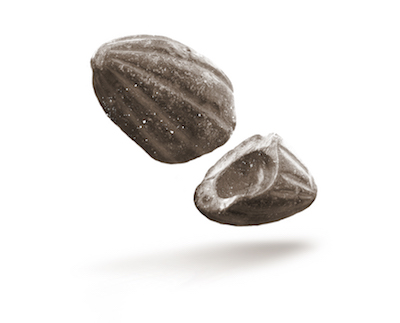
Oldest known artifact depicting cacáo (above); ~3300 BCE; Mayo Chinchipe (courtesy Francisco Valdez / IRD France via TO’aK Chocolate)
Furthermore, seashells found throughout the Chinchipe basin leave clues to interactions between the Mayo Chinchipe & their contemporaries on the Pacific coast, particularly the Valdivia culture. Shells were traded for their symbolic value rather than for food. The spondylus shell, for instance, was linked to fertility by many Andean peoples in antiquity & conch shells today are still used for trumpets during indigenous rituals.
Speculation that cacáo might’ve been exchanged for these seashells, in an economic network stretching between the Amazon & the Pacific, leads on perhaps to farther voyages… particularly north to cacáo’s eventual center of domestication – Mesoamerica – where it would later be revered by the great Mayan civilization.
Home site (above) off the central plaza points to a structured village plan separating domestic areas from public ones for civic-ceremonies, including a cemetery reserved for the elite. Put together, these elements tell of a sedentary society based in agriculture with specialization of labor & elements of social hierarchy.
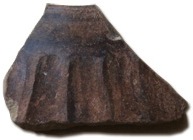 1,900 – 1,800 BCE – among the original cultivators of cacáo, The Mokaya (“People of the Corn” ironically), during Barra Ceramic Phase (thin-walled, finely finished & elaborately decorated pottery vessels); Paso de la Amada, Xoconochco (present day Soconusco), Pacific Coast of Chiapas, Mexico.
1,900 – 1,800 BCE – among the original cultivators of cacáo, The Mokaya (“People of the Corn” ironically), during Barra Ceramic Phase (thin-walled, finely finished & elaborately decorated pottery vessels); Paso de la Amada, Xoconochco (present day Soconusco), Pacific Coast of Chiapas, Mexico.
In 2008, only 1 of 16 sherds suspected for cacáo-use tested positive for theobromine (a key marker for chocolate) inside a Bayo Brown slipped tecomate with vertical fluting on its exterior surface (see figures left & below) found atop Structure 4 in Mound 6 — referred to as the “Chief’s House”. Taken as a whole complex, Mound 6 & its ascending structures represent a time-lapse microcosm of a shift from simpler egalitarian agriculture to stratified centralized power. Little can be gleaned however about the details behind cacáo’s usage but this find raises questions, both functional (for chicha [alcoholic chocolate]? atole [chocolate / maize draft]? &/or possibly a balsamic-like condiment?) & social (how pervasive in the community? restricted to elites? or pre-chiefdom & for everyone?) 
Above: Mokaya tecomatl & xicalli vessels from Paso de la Amada (drawing by Ajax Moreno); Upper Right: actual ceramic shard from the vessel (of the inset bordered in black) which tested positive for trace cacáo on its interior surface. Vessels eventually became ‘social currency’ among Mesoamericans, exchanged at feasts & ceremonial visits, preserved as heirlooms & funerary companions in the afterlife.
1,800 – 1,600 BCE – an array of pottery vessels recovered at the Olmec (olmeca: “rubber people”, derived from the Nahuatl word for rubber – ulli / olli) capital of San Lorenzo & its neighboring ritual site at El Manati test theobromine-positive, strongly indicating they once contained cacáo, most likely in some liquid form. Of particular curiosity: the finding of several hundred vessels atop a mass grave for sacrificial victims at the height of San Lorenzo’s power. Taken altogether, they furnish ample evidence of a well-attended, elite mortuary rite which included the preparation of stored cacáo draughts that were ritually served & imbibed. This service ware may have then been intentionally broken during the ceremony in an conspicuous undertaking of wealth destruction. By thus engraving cacao & human sacrifice in such a pivotal & integral way into the Mesoamerican cosmic theater that involves birth, death & rebirth, the Olmec nobility legitimized their earthly prestige & divine authority with audacious self-interest.
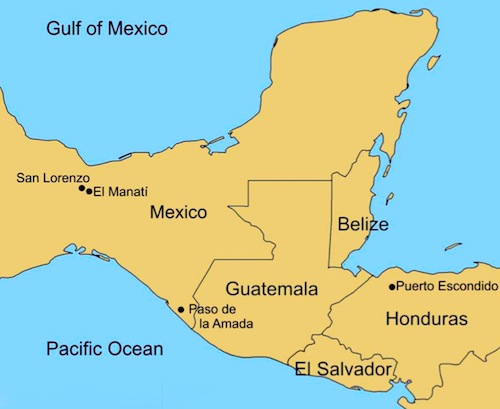 (above) map showing locations of early Mesoamerican archaeological sites where cacáo was consumed; (below) pottery vessels found at San Lorenzo that tested postive for cacáo residues used for storage, preparation & drinking (from “Cacao Use & The San Lorenzo Olmec” by Powis, Cyphers, et.al., 2011)
(above) map showing locations of early Mesoamerican archaeological sites where cacáo was consumed; (below) pottery vessels found at San Lorenzo that tested postive for cacáo residues used for storage, preparation & drinking (from “Cacao Use & The San Lorenzo Olmec” by Powis, Cyphers, et.al., 2011)
1,150 BCE – Puerto Escondido, Ulúa Valley, Honduras, Caribbean coast; Olmec-related village speculatively turns cacáo pulp into a wine

1,000BCE – 200CE – Chocolá: the very epicenter perhaps, lying on a plateau below volcanic mountain ridges at 500-1000m altitude, for a vitally important chain of revered cacáo groves in all of chocolate lore.
Along the humid piedmont zone of the Pacific slope of southern Mesoamerica extending from Xoconochco (Soconusco) Chiapas in modern Mexico, south thru the prime growing zone in Guatemala (Suchitepequez, Mazatenango, Escuintla, Guazacapán) & onward to Sonsonate (El Salvador), cacáo stood central — its worth in commerce & cosmology rivaled only by maize.
Early signs of high complexity at Chocolá are attributed to intense cultivation of cacáo, irrigated by hydraulic water springs, for the lucrative long-distance trade network. It may have indirectly borrowed from Xoconochco up the coast – an argument advanced by Yale Prof. Michael Coe in suggesting that the monumental stone-sculptors of Izapa (Xoconocho) form the connective tissue between the earlier Olmec & the later Maya that loosely ties them all together. If so, this represents a key development for the SMA (Southern Maya Area) &, plausibly, a seminal link in the rise of Classic Mayan civilization, architecture, city-states, hieroglyphic literacy, detailed ceramics & advanced math / astrology.
Many believe that cacáo culture reached its zenith there & then… the Maya naturally selecting prized cultivars for their hi-flavor, bringing forth the finest cacáo ever cultivated on Earth. Quite possibly true insofar as Friar Francisco Ximénez, noted translator of the holy Mayan text Popul Vuh, inventoried the single-origin cacáos in the Americas, saying that the absolute best grew along this Pacific coast.
Over the centuries – millennia really – the Maya developed & refined chocolate craft. They planted for variety & diversity on a stunning scale – especially by modern standards. Each selection based on desirable traits & described by respective fruit colors: (ix sac [white], ix kan [yellow], ix chak [red], ix morado [purple], & even ix box [black]).
That Chocolá’s environs & era largely coincides & overlaps with the distribution of ‘potbelly sculpture’, which appears around the Late Preclassic (c. 200CE), comprises the heart & guts for what might affectionately be termed the geographic ‘chocolate potbelly’ of cacáo.
600 BCE – Colha, Mayan stone tool production center (modern-day northern Belize), shows further archeological evidence of cacáo residues in drinking vessel
500 BCE – chemical markers for cacáo found on flat plates at Paso del Macho, Yucatán, Mexico strongly suggest a chocolate type sauce, condiment &/or garnish in cuisine other than a beverage
450 CE–
Ancient Maya City of Copán (Honduras), Mayan Classic Period; móle-prototype of animal bones (turkey & fish) with cacáo, as well as tamale platter with cacáo
The “Dazzler Vase” (below), arguably the most famed vessel from all of Meoamerica, recovered from within the royal ‘Margarita Tomb’ in Copán, Honduras. It sports a goggle-eyed figure peering out the window of a talud-&-tablero style structure that eerily resembles another tomb nearby called the ‘Hunal’. Mayanist David Stuart views the figure as the spirit of Copán founder King K’inch Yax K’uk’ Mo’ looking in on his Queen wife (& mother of their son King K’inich Popol Hol) buried in the Margarita Tomb across from his own royal crypt at Hunal. A well-preserved layer of cacáo residue lines the bottom of the vase, retaining the hue of dark chocolate, the remains of a possible ritual draft. The intent is that cacáo would sustain the departed on their long journey thru the underworld… the finest offering made even more sacred by its escorting them.
 590 CE – Home-Grown Chocolate: Joya de Cerén (The Jewel of Cerén in the Valley of Zapotitlán, El Salvador), a Mayan agricultural village & Pompeii of the New World, preserves a young cacáo tree with a flower just opening up in ash – from the nearby volcano Loma Caldera – the oldest known cacáo tree in existence; immediately south of Structure 4, next to the storehouse for Household 4 where inside that building were pots with cacáo in them
590 CE – Home-Grown Chocolate: Joya de Cerén (The Jewel of Cerén in the Valley of Zapotitlán, El Salvador), a Mayan agricultural village & Pompeii of the New World, preserves a young cacáo tree with a flower just opening up in ash – from the nearby volcano Loma Caldera – the oldest known cacáo tree in existence; immediately south of Structure 4, next to the storehouse for Household 4 where inside that building were pots with cacáo in them 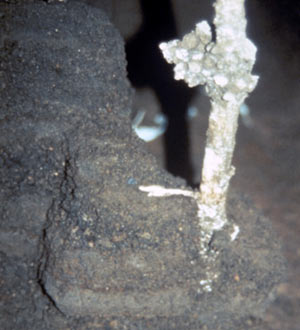
(photo courtesy Payson Sheets who led the recovery of Cerén in 1976)
683 CE – death of King Pakal (Ajaw K’inich Janaab’ Pakal), Palenque / B’aakal (Mexico). Arguably the most renowned of all Mayan monarchs anywhere, in addition to the longest ruling (more than 3 K’atuns = 68 years). Palenque / B’aakal flourished during Pakal’s reign to eclipse the great city of Tik’al. Carved stone-relief on the North & South ends of his famed sarcophagus depict his mother, Queen Zac K’uk’, as re-born thru a cacáo tree. 
Bas-relief of Queen Zac K’uk’ on the North End of her son King Pakal’s sarcophagus (left); mirror image (right) drawn by Merle Greene Robertson
770 CE – Earliest Chocolate in North America? Site 13 near Canyonlands in present-day Utah… home to peoples who grew corn & dwelt in subterranean houses. Ceramic bowls excavated from the area contain traces of theobromine & caffeine — two markers for chocolate derived from cacáo nuts imported from thousands of miles away to the south in a trade network that included parrots & copper bells among other goods. 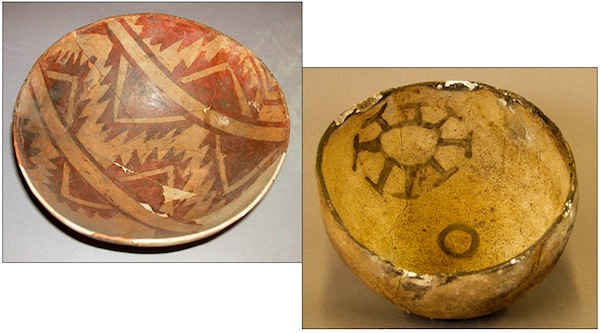
‘… and a bowlful of chocolate, please.’ ‘Large or small?’ 8th century pottery vessels from the American Southwest that tested positive for trace amounts of chocolate compounds (Peabody Museum of Archeology & Ethnology, Harvard University)
790 CE – Bonampak / Bòonam Pak’ (Mayan for ‘Painted Wall’) Chiapas, Mexico; fresco of cacáo bundle containing 40,000 beans as tribute to the king on the Bonampak Mural – considered the pictorial encyclopedia of a Mayan city
 (Above): East Wall, Room 1, Temple of the Murals at Bonampak, Chiapas, Mexico; Royal Family grouping with tribute bundles – the only one labeled stands lower right (reconstruction painting by Heather Hurst & Leonard Ashby); (Below): close-up black & white photo (copyright David Wooddell @ WooddellPhoto.com) of the original painting shows bundle inscribed with the Mayan glyph jo’ pik kakaw, translated by epigrapher David Stuart as ‘5 units of kakaw’ (each unit, or xiquipilli in Nahuatl, equals 8,000), the contents adding up to a royal coffer of 40,000 cacáo beans. (Images @ Bonampak Documentation Project, courtesy Prof. Mary Miller, Yale)
(Above): East Wall, Room 1, Temple of the Murals at Bonampak, Chiapas, Mexico; Royal Family grouping with tribute bundles – the only one labeled stands lower right (reconstruction painting by Heather Hurst & Leonard Ashby); (Below): close-up black & white photo (copyright David Wooddell @ WooddellPhoto.com) of the original painting shows bundle inscribed with the Mayan glyph jo’ pik kakaw, translated by epigrapher David Stuart as ‘5 units of kakaw’ (each unit, or xiquipilli in Nahuatl, equals 8,000), the contents adding up to a royal coffer of 40,000 cacáo beans. (Images @ Bonampak Documentation Project, courtesy Prof. Mary Miller, Yale)

Much of Mayan art is preserved in the form of stone hieroglyphics. These interior walls at Bonampak preserve the finest example of Classic Maya painting, known otherwise only from pottery vessels. (The San Bartolo Murals narrate Preclassic Maya.) They enliven 3 rooms, painted in fresco during one session, & show a series of actual events with brutal realism: the story of a single battle & its victory celebration.  Yale dean Mary Miller (author of Maya Art & Architecture; The Murals of Bonampak; & curator for The Courtly Art of the Ancient Maya) says they speak as a unique recording: “Perhaps no single artifact from the ancient New World offers as complex a view of Prehispanic society… No other work features so many Maya… rendered in such great detail, making the Bonampak murals an unparalleled resource for understanding ancient society.” The murals capture a sad irony for Bonampak in that they were painted by artists from rival Yaxchilan to humiliate it after a string of battlefield defeats:
Yale dean Mary Miller (author of Maya Art & Architecture; The Murals of Bonampak; & curator for The Courtly Art of the Ancient Maya) says they speak as a unique recording: “Perhaps no single artifact from the ancient New World offers as complex a view of Prehispanic society… No other work features so many Maya… rendered in such great detail, making the Bonampak murals an unparalleled resource for understanding ancient society.” The murals capture a sad irony for Bonampak in that they were painted by artists from rival Yaxchilan to humiliate it after a string of battlefield defeats:  Early 5th century, Bonampak’s Bird Jaguar fought & lost in Yaxchilan against K’inich Tatb’u Skull I, a blow that cost him his own freedom having been taken captive – a stigma for any ruler. Other Bonampak nobles suffered the same fate in a later war against Yaxchilan’s Knot-Eye Jaguar I. In 526 K’inich Tatb’u Skull II of Yaxchilan attacked Bonampak & captured more lords. By 600CE Yaxchilan occupied & virtually owned Bonampak. It installed Chan Muwaan I as sajal (subordinate lord). Circa 790CE, Yaxchilan’s ajaw (king) Shield Jaguar III oversaw the installation of Chan Muwaan II who commissioned Yaxchilano artisans to commemorate this dominance. The murals look back to that pivotal moment of the previous Chan Muwaan I asserting control over Bonampak. In this visual essay, cacáo features prominently as a display of power, prestige & deep pockets.
Early 5th century, Bonampak’s Bird Jaguar fought & lost in Yaxchilan against K’inich Tatb’u Skull I, a blow that cost him his own freedom having been taken captive – a stigma for any ruler. Other Bonampak nobles suffered the same fate in a later war against Yaxchilan’s Knot-Eye Jaguar I. In 526 K’inich Tatb’u Skull II of Yaxchilan attacked Bonampak & captured more lords. By 600CE Yaxchilan occupied & virtually owned Bonampak. It installed Chan Muwaan I as sajal (subordinate lord). Circa 790CE, Yaxchilan’s ajaw (king) Shield Jaguar III oversaw the installation of Chan Muwaan II who commissioned Yaxchilano artisans to commemorate this dominance. The murals look back to that pivotal moment of the previous Chan Muwaan I asserting control over Bonampak. In this visual essay, cacáo features prominently as a display of power, prestige & deep pockets.
900 CE– more chocolate north of the Rio Grande; Chaco Canyon (New Mexico)
 Pueblo Bonito, Chaco Canyon (digital reconstruction by Nic Chancellor)
Pueblo Bonito, Chaco Canyon (digital reconstruction by Nic Chancellor)
Pre-Columbian Mesoamerica –
Money Grows on Trees… cacáo beans circulate as a form of currency during Mayan & Mexícâ (Aztec) era; chocolate drinks – the champagne of the empire – mixed with extracts, the paramount one being that other great American botanical – vanilla – in concert with two others which composed the ‘Floral Triumvirate’ – 1) divine flowery ear (variously known in Nahua as xochinacaztli, teonacaztli, hueinacaztli) & 2) the resinous mecaxóchitl (probably the plant Piper sanctum / acuyo) – as well as chili, achiote, maize, & ceiba; ritualized use in blood sacrifices; girded warriors for battle
********************
 To celebrate an annual Spring rite during the festival of Toxcatl (variously meaning ‘smoke’ & ‘drought’), priests select a young man, idealized for both his physical beauty & artistic talent, to ixiptlatli or impersonate the powerful deity Texcatlipoca (‘Smoking Mirror’) in a show of veneration. This Meso-American Idol then rock starred for a whole year, receiving honors everywhere, including maiden groupies. Toward the end of his term, he’d be plied with cups of chocolate mixed with achiote, symbolizing heart & blood, to embolden him for the encore. Instead of a Cinderella story turning back into a pumpkin, he was literally toast… sacrificed at the edge of an obsidian blade (reflective of mirror), heart severed & burned in the temple’s brazier. Blood, & by extension the still-beating heart, renew a connection with the sacred that seemed essential to the very existence of the natural order. Rubbing it on idols (in this case Texcatlipoca) ensouled them to operate in a literal transubstantiation, rather than a symbolic transformation, on which the fate of the world & its inhabitants depended. Priests then flay the rest of the body for consumption. Noteworthy too that Spanish-American relations turned for the worse during the festival month of 1520.
To celebrate an annual Spring rite during the festival of Toxcatl (variously meaning ‘smoke’ & ‘drought’), priests select a young man, idealized for both his physical beauty & artistic talent, to ixiptlatli or impersonate the powerful deity Texcatlipoca (‘Smoking Mirror’) in a show of veneration. This Meso-American Idol then rock starred for a whole year, receiving honors everywhere, including maiden groupies. Toward the end of his term, he’d be plied with cups of chocolate mixed with achiote, symbolizing heart & blood, to embolden him for the encore. Instead of a Cinderella story turning back into a pumpkin, he was literally toast… sacrificed at the edge of an obsidian blade (reflective of mirror), heart severed & burned in the temple’s brazier. Blood, & by extension the still-beating heart, renew a connection with the sacred that seemed essential to the very existence of the natural order. Rubbing it on idols (in this case Texcatlipoca) ensouled them to operate in a literal transubstantiation, rather than a symbolic transformation, on which the fate of the world & its inhabitants depended. Priests then flay the rest of the body for consumption. Noteworthy too that Spanish-American relations turned for the worse during the festival month of 1520.
1402-72 – Acolmiztli Nezahualcoyotl (“fast coyote” in Nahua); emperor, warrior, poet & sage who has also graced the Mexican 100 peso note, rhapsodizes chocolate 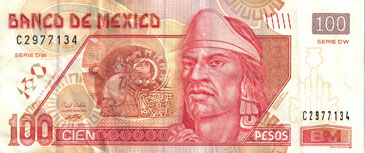 Nezahualcoyotl cultivated rule of law, scholarship & arts that influenced an entire kingdom. Under his reign, Texcoco flourished as the Athens of the Americas, the intellectual / cultural centre for the Triple Alliance, endowed with an extensive library & music conservatory that were unwisely destroyed during the Spanish conquest. (Remains of hilltop gardens, sculptures & a complex aqueduct bear testament to advanced levels of engineering & aesthetics.) Of all the creative lights nurtured there, the greatest may have been the emperor himself. Considered among the eminent architects of Mesoamerica, Nezahualcoyotl is credited with personally designing the “albarrada de Nezahualcoyotl”, a dike which separated fresh water from the brackish Lake Texcoco that still operated a century after his death. Portrayed as a monotheist, he is said – by relatives who perhaps sought to further polish his credentials – to have honored God in a 10-story temple pyramid whose gem-encrusted shrine permitted no human sacrifices to besmirch it, only the offering of flowers, incense & cacáo.
Nezahualcoyotl cultivated rule of law, scholarship & arts that influenced an entire kingdom. Under his reign, Texcoco flourished as the Athens of the Americas, the intellectual / cultural centre for the Triple Alliance, endowed with an extensive library & music conservatory that were unwisely destroyed during the Spanish conquest. (Remains of hilltop gardens, sculptures & a complex aqueduct bear testament to advanced levels of engineering & aesthetics.) Of all the creative lights nurtured there, the greatest may have been the emperor himself. Considered among the eminent architects of Mesoamerica, Nezahualcoyotl is credited with personally designing the “albarrada de Nezahualcoyotl”, a dike which separated fresh water from the brackish Lake Texcoco that still operated a century after his death. Portrayed as a monotheist, he is said – by relatives who perhaps sought to further polish his credentials – to have honored God in a 10-story temple pyramid whose gem-encrusted shrine permitted no human sacrifices to besmirch it, only the offering of flowers, incense & cacáo.
1494 – Treaty of Tordesillas signed by Pope Alexander VI (who 7 cold winters later threw the Banquet of Chestnuts orgy in the Vatican palazzo offering up 50+ courtesans to his best prelates, with himself as chief celebrant) draws an imaginary line on the map that claims for Spain the riches of the New World. Soon this triggers conflict with European rivals & pirates who rally under the banner No Peace Beyond the Line.
1502 – Still sailing the ocean blue…  Columbus intercepts beans of cocoa – Europe’s initial encounter with it… Columbus’ 4th & Final Voyage: old, sick, the bedraggled hero giving it one more try; hoisting the sail, raising the flag. Still reaching… for the ancient quest, the strait that would link the Indies (Americas) to the spices of India / Asia – & hoping to convince anyone that, like the warning in frosted-letters on a side view mirror, ‘objects are closer than they appear’.
Columbus intercepts beans of cocoa – Europe’s initial encounter with it… Columbus’ 4th & Final Voyage: old, sick, the bedraggled hero giving it one more try; hoisting the sail, raising the flag. Still reaching… for the ancient quest, the strait that would link the Indies (Americas) to the spices of India / Asia – & hoping to convince anyone that, like the warning in frosted-letters on a side view mirror, ‘objects are closer than they appear’.
He probably senses the end of a career for he makes it a family affair along with his brother Bart & his 13 year-old son Fernando. Arrives in Hispaniola & immediately, the man who put Europeans on the New World map, the Brett Favre of the Sailing League, gets unceremoniously shoved off the island by Gov. Nicolás de Ovando (notorious for ruthlessness & ordering the first African slaves imported into the Americas).
Instead of retiring to go home right after some of his best seasons in a storied career, he & crew take to the high seas & sail on… only to meet rough waters. They run into more storms than the Weather Channel. His diary entry: “…the sea so angry, so high, so covered with foam… no opportunity for shelter, forced to keep out in this bloody ocean, seething like a pot on a hot fire.”
Notices something of value on August 15th off the coast of present-day Honduras (Guanaja, now called Bonacca, one of the Bay Islands in the Caribbean).
In the belly of a large dugout canoe, the size of galley (or half a football field), carved of a single tree trunk 8 feet wide, powered by 2 dozen oarsmen, a palm-leaf awning amidship for protection against the wind & waves, underneath which were women & children, baggage & merchandise. Belonging to Chontal-Maya Putún, they spilled a couple of what his son Fernando describe as “almonds” & scramble furiously to pick them up: “Some have fallen into the water trying to retrieve them as if their eyes had fallen out of their heads”.
Seizes the cargo (that is, cacáo) & its captain, the cacique named Yumbé – the 1st Mayan name or title known to the Spanish, meaning ‘Lord of the Route’ – but misses the boat on the beans potential.
That canoe, a kind of rolling Brinks Security vehicle on water instead of wheels, perhaps even a floating Federal Reserve Bank depending on dignitaries onboard, as noble cacáo circulated as a sort of currency among Mayans which they counted as good as gold. Hence, the coinage ‘money grows on trees’, & grew richer still controlling cacáo trade-routes up & down the Yucatán coast.
Eureka: Columbus finds it, sort of, in Panama where he meets locals who regal him with lots o’ gold & tell of this ‘other ocean’ just miles away (the Pacific) where a canal will link his dream of a strait to the spices of India / Asia… just 400 years away.
Voyage ends marooned in Jamaica, beset by more storms, & attacks too.
1519–
Emissaries of the Mexìcâ greet Cortés’ expedition as honored guests on the Gulf coast at Cuetlaxtlan near Veracruz where fate & fortune convened when the conquistadores came ashore in the very heart of the forerunners for Mesoamerican civilization – the then-vanquished though still-pervasive Olmecs – with locals offering the foreign visitors jewels & feather works plus a summer bar-b-que of fowl, grilled game, tortillas, fruit, & many xicalli gourds of cacáo for drinking, a few sips after which the Spanish flinched, trembling in fear
********************
The probable libation for toasting what’s arguably the strangest, most exotic, & earth-shaking summit in the history of mankind when Tlatoani Motecuhzoma Xocoyotzin (Moctezuma II) welcomes Hernán Cortés in Tenochtitlán on November 8, 1519 as the Old World meets the New, an encounter that’ll only be surpassed if E.T.s contact humans: the naturally naked standing toe-to-toe with the coarsely clothed; those with war paint face-to-face with those who wore beards; people living within the rhythms of the Earth versus the techno-bent who believed in domain over it… each from diametrically opposite cultures & landscapes to think that God conceived a 2nd creation. Customary protocol at the Mexìcâ court called for royal fanfare to welcome dignitaries with water for washing hands, a goblet of cacáo for setting good mood & conversation, & the relaxing effects of tobacco tubes as a sign of friendship which Einstein would later observe contribute “to objective judgment in all human affairs”… plus flowers to uplift the ceremony.
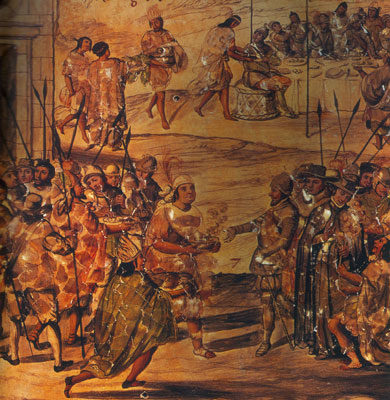 Cortés meeting Motecuhzoma (by Miguel González)
Cortés meeting Motecuhzoma (by Miguel González)
1521 – August 13… violent fall of Tenochtitlán, capital of the Mexìcâ (Aztec) Empire, & its royal treasury of cacáo to Hernan Cortés & the Spanish Conquistadores, marking a durable European presence in the New World & the beginning of the end to a way of life for a people 4,635 years to the very day of creation according to their Mesoamerican Long Count Calendar
1522 – Cortés reports to Emperor Charles V on his return to Spain (fact), presumably carrying cacáo seeds in tow (supposition), after writing to him a line (of probable fiction; see entry below dated 1556) that has become a chain letter sent across the world of chocolate: ‘the divine drink which builds up resistance & fights fatigue… a precious cup permits a man to walk for a whole day without food.’
1530s – Chocolate Subversion: Mesoamericans led by the esoteric skills of Tacatetl & Tanixtetl, two naguals (shape-shifters) who could transform themselves into jaguars & coyotes, clandestinely propitiate their gods with chocolate in hidden caverns. Ritualized according to the Mayan calendar as a link to their past, a mnemonic for rekindling cultural memories, & a shaded-response that forms part of a strategy of resistance (the only ‘by-any-means-necessary’ then available to them) in the face of withering Spanish colonial rule that, paradoxically but eventually, will bridge to a syncretic version of Christianity in the New World, requisitioning chocolate alms for the journey their dead ancestors make into the underworld to reappear during Catholic Mass on All Souls Day … El Día de los Muertos… Halloween. For their transgressions Tacatetl & Tanixtetl endure public floggings, then sentenced to years of hard labor in a monastery.
1531 – 1st recorded appearance of cacáo (along with the chocolate-drinking vessels – xicalli [Hispanicized as jícaras) in the Old World, carried from Tepetlaoztoc via Veracruz, Mexico to Spain by servants of the encomendero Gonzalo de Salazaar
1538-39 – After conquering the Incas, Pizzaro dispatches Peranzures de Campo Redondo to explore the land of the Chunchos in forests east of the Peruvian Andes where his expedition comes upon a river valley filled with cacáo groves – the first account of Theobroma cacao in the Amazon
1544 – Kekchi Maya voyage to Europe & offer the draft of foaming chocolate while visiting with Prince Philip of Spain (later Philip II)
1554 – Pirates of the Caribbean, starting with Francois Le Clerc, begin their dogged pursuit of Spanish ships laden with gold, silver, pearls, gems, tobacco, spices & cocoa. Out for sheer profit & sport rather than any appearance of patriotism, they lurk the waters under the Jolly Roger Flag & a business motto of ‘no prey, no pay’. 
1556 – Among the earliest recipes documented by a European for the preparation of chocolate learned from his Mesoamerican victims, as well as a fabled line (in bold below) about the powers of chocolate which has been handed down & circulated thru the centuries, appears in the Narrative of Some Things of New Spain & of the Great City of Temestitan, México. Thought to be an eyewitness account of the conquest of the Mexìcâ / Aztec Empire, it is rumored to be written by a lieutenant to Capt. Hernán Cortés known to history only as “The Anonymous Conquistadore” (speculation points to Cortés’ mayordomo, Francisco de Terrazas):
These seeds, which they call almonds or cacao, are ground & made into powder, & some other small seeds they have are also ground, & the powder put into ceramic vessels shaped with a spout. They then add water & stir with a spoon, & after it is well-mixed they pour it back & forth from one vessel to another until it’s foamy. The foam is gathered & put into a cup, & when they are ready to drink the beverage they agitate it with some small spoons made of gold, or silver or wood. To drink one must open the mouth wide since it has a froth so it’s necessary to make room for it to dissolve & so go in gradually. The drink is the most wholesome & substantial of any food or beverage in the world, because whoever drinks a cup of this liquor can go thru a whole day without taking anything else even if on a cross-country journey…
1560–
Spain begins an annual treasure fleet… a convey ranging anywhere from 17 to 50 ships, to protect or at least minimize losses against piracy
Rumored introduction of a cacáo tree into Asia, on the island of Sulawesi, Indonesia from Caracas, Venezuela
1577–
Francisco Hernández completes his nearly 900 page natural history – Obras Completas – that includes the first systematic botany & natural history of cacáo on record after Philip II commissioned him in 1569 to travel to Nueva España (Mexico) where he wrote it at the Royal Indian Hospital there.
Pope Gregory XIII – of Gregorian calendar fame – supposedly settles a dispute on whether chocolate violates the Church’s Lenten fast, ruling in a oral rather than written decree because he & his convening cardinals find the issue so trivial that they laugh off the puritanical Dominicans in favor of the hedonist Jesuits who were daily drinkers of cocoa as well as traders in it; from this date forward the Church exempts chocolate from ecclesiastical fasts, remarkable in light of a) ethnographic reports by Léon Pinelo that the Mexîcà abstained from chocolate during the festival of Quetzalcoatl, making them more evangelical in their ‘idolatrous’ piety than the holy Roman Catholics & b) it currently exhorts the flock to give up texting & all electronic distractions during periods of abstinence
1580s – Cacáo as Materia Medica… animated by a conflicting fear of & desire for an exotic thing acquired from ‘pagans & barbarians’ (re: Mesoamericans), Spaniards led by Francisco Hernández & Dr. Juan de Cárdenas begin grappling with how to incorporate cacáo into a ‘civilized’ framework: an apothecary based on Humoral Medicine subscribes that cacáo contains healing-properties encompassing 3 & perhaps all 4 elements – air (fat), fire (bitter), earth (thick) & maybe water (sweet) – to yield a neutral temperament leaning ‘wet-cool’, thus making it acceptable. (Unbeknownst to Europeans, native medicine also treated cacáo as similarly ‘cool’, applying it as an emollient in hot illnesses such as fevers & dysentery.)

1590 – The word chocolate, a Spanish gloss of several terms spoken by Mesoamerican aborigines, appears for the 1st time, originally noted in José de Acosta’s Historia Natural. One etymology: kakawa (from the Mije-Sokean language family, a loan word perhaps dating back to circa 1,000BC & the Olmec civilization around San Lorenzo) + cacahuatl (Nawa language for ‘cacáo water’) -> kakawatl (a term appearing in the 1st Nawa-Spanish dictionary published 1551, expanded in 1571 by Alonso de Molina) ; + chocol haa (Mayan for ‘hot water’)… Spaniards quite likely glossed Mayan chocol (hot) + Nawa atl (water) = chocolatl (cited by botanist Francisco Hernández ca. 1580)… eventually boils down to -> chocolate. Why didn’t Conquistadors just use the Nawa cacahuatl in the first place? Because caca in Spanish means shit. (However grotesque, hence plausible, this may sound to our ears today, influenced as they are by the Victorians, the Middles Ages, remember, belong to the Renaissance when crude bodily functions such as snots, spit, burps, farts, & crap enjoyed, according to literary theorist Mikhail Bakhtin, deeply moving associations – all positive! – with decay & renewal in the cycle of life & death of which the people back then supposedly were less afraid[?]) 
Chocolate’s Antecedents: Arte Para Aprender la Lengua Mexicana (1547CE), the first Nahuatl grammar book compiled by a European — the Franciscan André de Olmos, assistant to the first archbishop / ‘Protector of the Indians’ in Mexico Juan de Zumárraga. In it, on page 32, de Olmos translates ‘coatl’ -> ‘cocoa’.
1591 – 1st recorded shipment of cocoa to the Old World for commercial purposes; Veracruz, Mexico to Seville, Spain; fleet tax records indicate no cacáo beans were transported since Europe then lacked the knowledge & equipment to manufacture the raw material into a consumable good
Late 1590s – demographic shifts, diseases, & overproduction virtually wipe out Mesoamerican cacáo; Spanish colonists eventually shift major production zones & transport cacáo seedlings to the Caribbean & northern coast of South America
Early 1600s – Middle Passagebegins in earnest, inhumanely herding Africans onto slave ships destined for sugarcane, cotton, & cacáo plantations in the New World after many Amerinds succumb to European diseases & weapons.
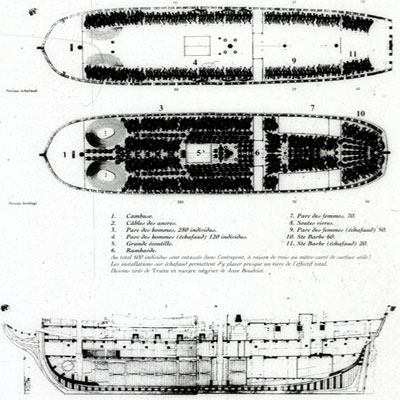
1606 – An Italian traveler, Antonio Carletti, discovers chocolate in Spain & takes it to Italy. From there, it spreads to Germany, Austria & Switzerland.
1615 – Spanish princess Anne of Austria (yes, a convoluted family tree) marries the boy-king Louis XIII — both 14 years-old at the time of their wedding — to quell enmity between rivals France & Spain. A questionable legend has it that she gave her all with an engagement present of chocolate which leads to the spread of chocolate among Euro aristocracy
1618 – publication of Bartolomé Marradón’s Diálogo del Uso, the 1st book devoted to chocolate; an imaginary 3-way dialogue between an Amerindian, a physician, & a common citizen, each taking a different viewpoint (idolatry, medical, & satanic) in a fantastic treatise of Indo-European bridge-work on the pros & cons of cacáo, highlighting its potency, sorcery, & blasphemy
1624 – The more things change… & everything that’s old… Un Discurso de Chocolate by Dr. Santiago Valverde Turices; first guide on chocolate for “the many people who are now discussing chocolate… asking if it’s healthy or harmful”
1632 – Spanish Monarchy imposes first “vice tax” on cacáo & its chocolate ingredients
1643– reign of Louis XIV begins; palace guests customarily served cocoa at 10AM while the host is still in bed
Ahhh, even a life of leisure can lead to stress: La Crainte (‘The Fear’; courtesy of the Toledo, OH Museum of Art) by Jean-Baptiste Le Prince exposes a madame, bare bosom, in her boudoir where women of nobility took breakfast in private with fluid, langorous brushstrokes suitable for the lifestyle. Fearful of her departing lover (as most art historians commentate) or frustrated by the chocolatière & accouterments on the nightstand running low (thus causing her to knock a chair over)? In any event, as WolfgangSchivelbusch describes in Tastes of Paradise: A Social History of Spices, Stimulants & Intoxicants, a long breakfast over chocolate “does not start off a workday – rather it marks the start of a day’s carefully cultivated idleness”. Fashionably relaxed & lazy, with ample time on her hands – the ultimate privilege of power. This perhaps more than anything else explains the social rift that developed between chocolate & coffee starting with the French Revolution (see the dateline for 1789).
(below) Another look at starting the day off… Dejeuner (“The Breakfast”) by the Rococo iconoclast François Boucher whose illustrious patroness was Madame de Pompadour (she the chief mistress to King Louis XV). Boucher famously said “la nature est trop verte et mal éclairée” (‘nature is too green & badly lit’). His solution, of course: illuminating chocolate. This genre scene, or snapshot of everyday life, showcases domestic peace & intimacy among an 18thcentury nuclear family (probably the painter’s own) gathered around the table with a chocolatière held aloft at the center. A theme that would be carried forward to the 19th century with Runkel Cocoa (below next; from Private Collection / The John Grossman Collection of Antique Images, Tucson, AZ).
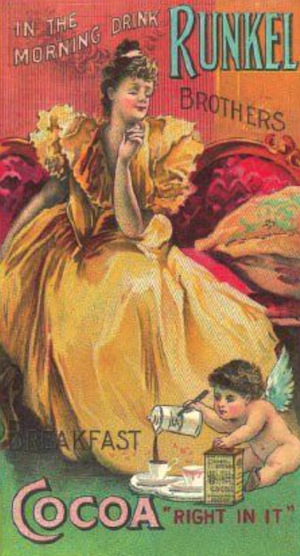 1657– 1st known chocolate house in London, as appeared in the Public Advertiser, “in Bishopsgate Street, in Queen’s Head Alley, at a Frenchman’s house, is an excellent West India drink, called chocolate, to be sold, where you may have it ready at anytime, and also unmade, at reasonable rates”
1657– 1st known chocolate house in London, as appeared in the Public Advertiser, “in Bishopsgate Street, in Queen’s Head Alley, at a Frenchman’s house, is an excellent West India drink, called chocolate, to be sold, where you may have it ready at anytime, and also unmade, at reasonable rates”
1660s – America loses its birthright as cacáo begins to circumnavigate the globe from its New World home in the form of seedlings/grafts; first across the Pacific to the Philippines, then later to the South Pacific, Africa, & all around the Caribbean basin
Principle routes of cacáo movement: 1 ) 1660-70 Mexico to Philippines; 2 ) 1664 Amazon to Martinique; 3 ) Philippines -> Indonesia; 4 ) 1757 Amazon -> Trinidad; 5 ) Early 19th Century Indonesia -> Ceylon (Sri Lanka); 6 ) 18th & 19th Centuries Amazon -> SE Brazil; 7 ) 1822 Brazil -> San Principe; 8 ) 1840s Dublin -> Sierra Leone; 9 ) 1861 Ecuador -> Guatemala; 10 ) 1880-1 Trindad -> Ceylon (Sri Lanka); 11 ) 1883 Trinidad -> Fiji; 12 ) 1892-3 Trinidad -> Nicaragua & back; 13 ) 1898 Trinidad -> Costa Rica & Colombia; 14 ) 1890 Venezuela -> Ecuador; 15 ) 1930s Ecuador -> Costa Rica & Panama; 16 ) 1880s Trinidad, Venezuela, & Ecuador -> São Tomé; 17 ) 1899 Trinidad, Venezuela, Ecuador & Central America to Cameroon; 18 ) late 19th Century Indonesia to Samoa (Source: The Genetic Diversity of Cacao, B.G.D. Bartley)
1670 – Móle Poblano christened at Pueblo de los Angeles though loose prototypes pre-date the Spanish Conquest by centuries
1671– Praliné, the wreckage of a kitchen accident (a dropped bowl of almonds & a pan of burnt sugar) by the pastry chef to the duc de Choiseul – compte du Plesslis-Praslin (ambassador under Louis XIII) – who was then served whatever could be scraped off the floor; he ate it up
| 1672 – according to the International Cocoa Organization, Sir Hans Sloane details in the American Physitian a medicinal recipe using milk in drinking chocolate which he believes has therapeutic properties but because the taste is unpalatable, he boils the beans in milk & sugar, creating the 1st milk chocolate draft—“hot cocoa.” | 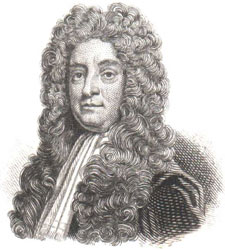 |
1674 – The Coffee Mill & Tobasco Roll Shoppe in London prepares the ‘Spanish-style Chocolate Roll’ (forerunner to the Tootsie Roll™ as well as the modern chocolate bar) to be eaten rather than drunk
1704 – Sarah Kemble Knight packs chocolate in her saddle during a solo trip on horseback enroute from Boston to NYC… an unheard-of-journey at the time for a women to undertake
1710 – 
La Xocolatada tiled painting once part of the courtyard wall belonging to the estate of Marqués de Castelvell where special chocolate drawing quarters (pieza de chocolate) were appointed in the grand residence. Now housed in the Museu de Ceràmica Barcelona, a detail of La Xocolatada graces the cover of the Coes’ True History of Chocolate. It captures a party that places the chocolate service right in the middle, at the peak of hospitality, in a ritualized setting. Juxtaposed with flowers, rich paintings, crystal trifles & every sort of opulent marker linked to social bonds, convivial cacáo surpasses all, including gossiping, flirting, feasting & even dancing seeing how everyone’s center of attention is cast toward it, eager to have some. La Xocolatada recalls the now-ancient Mesoamerican banquets hosted by Mexìcâ long-distance merchants (the pochteca) to honor warriors & nobles fueled by cacáo, celebrating intimacy of an erotic nature, the medium for love potions, spurring libidinal urges. As someone in attendance put it – when a party lacks chocolate, it’s not a party. Or Antonio Hurtado de Mendoza’s ‘Couplets of Chocolate’ (punning off a ‘cup of chocolate’) writing about this scarlet extravagance & embraces at the boiling point culminating in bites of the appetite while breasts are heaving as every dream is indulged considering that “the definition of love is chocolate.” Coming full circle, La Xocolatada draws a quick glance back to the Mixtec couple married in the Codex Vindobonensis Mexicanus by chocolate.
 (pre-)1730 — the true dawn of the chocolate bar… Richard Brookes writes in the 2nd edition to The Natural History of Chocolate about eating chocolate in solid form rather than a liquid beverage: “When a person is obliged to go from home, and cannot stay to have it made into a drink, he may eat an ounce of it, and drinking after it, leave the stomach to dissolve it.” No doubt the pochteca, the pre-Columbian FedEx couriers of their day who delivered chocolate tablets or balls across the Mesoamerican continent on foot, probably consumed it likewise when in a pinch.
(pre-)1730 — the true dawn of the chocolate bar… Richard Brookes writes in the 2nd edition to The Natural History of Chocolate about eating chocolate in solid form rather than a liquid beverage: “When a person is obliged to go from home, and cannot stay to have it made into a drink, he may eat an ounce of it, and drinking after it, leave the stomach to dissolve it.” No doubt the pochteca, the pre-Columbian FedEx couriers of their day who delivered chocolate tablets or balls across the Mesoamerican continent on foot, probably consumed it likewise when in a pinch.
1753 – Linnaeus classifies the tree from which chocolate derives & baptizes it Theobroma cacao (theobroma, Greek for ‘God-food’)
1754 – Ben Franklin sells locally manufactured chocolate in his Philadelphia print shop, & procures 6 lbs per subaltern officer for a Pennsylvania regiment marching in Gen. Braddock’s army during The French & Indian War, an offshoot of The 7 Years War back in Europe
1764/5 – Hannon’s Best Chocolate, the direct precursor to Baker’s Chocolate; though preceded by small chocolate mills such as Jonas Welch & James Cooke (a couple earlier “Boston Barsmiths” at the beginning of the 1700s), partners John Hannon (chocolate-maker) & James Baker (a miller / financier / physician) form what would become in American lore the oldest grocery trademark in the USA at Milton Lower Mills, near Dorchester, MA on the banks of the Neponset River.
Because Boston was a safe harbor from March 1776 until the end of the American War for Independence, chocolate production there continued on. Other cities to the south, however, such as New York & Philadelphia, long held by forces loyal to British interests, experienced disruptions in raw cocoa supplies from the West Indies for making chocolate. By war’s end the few chocolate makers remaining in the new USA were mostly Bostonian barsmiths.
In 1780, James Baker bought out the Hannon family interest after Hannon became lost at sea on his way to the West Indies to purchase cacáo (alternate reports claim he fled to Ireland to escape his overbearing wife), thus dissolving the partnership & released the first chocolate bearing the ‘Baker’ stamp. Riding a wave of new technology & unleashing shrewd marketing campaigns that set it on course for expansion, Baker built a company based on the pillars of a) purity of product, b) mass production, c) money-back guarantee, & d) affordability (the latter due in part to innovation as well as cacáo arbitrage in dealing directly with plantations owners in the tropics with the added bonus that the Baker line included regional cocoas well before the “single-origin” rage of the late 20th / early 21st century). These circumstances helped propel Baker’s® into a trusted name & eventually a household brand.
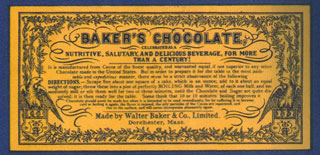
(above) Wrapper of Baker’s unsweetened chocolate.
In the 1800s the company purchased the advertising rights to Das Schokoladenmädchen(aka “La Belle Chocolatière” / “The Chocolate Girl”), by Swiss painter Jean-Étienne Liotard (below left; from the Gemäldegalerie Alte Meister, Dresden, Germany). Created in 1742-3, Liotard toured Vienna to render the portraits of the imperial court at The House of Hapsburg & Kaiserin Maria Theresa. This image supposedly depicts Nandl, then the 20 year-old daughter of Melchior Baldauf, a Viennese knight. Her grace won the eye of Prince Dietrichstein who married the charming chambermaid now immortalized in this pastel of Annerl serving a cup of chocolate & a glass of water. Boston University’s Anne Blaschke remarks how Baker’s plays upon a not-so-subliminal message: chocolate cuts across class lines & appeals to all on equal terms as a great socioeconomic leveler. It enabled the modern equivalent of a waitress & a prince to access each other’s worlds to discover romance. Such values as making one’s own destiny & equal opportunity are as American as… well, chocolate; & resonate as much today as they did then.
The Chocolate Girl became the personification of Baker’s (below right, lower left-corner of the ad) & the godmother, so to speak, to the Sun-Maid® Raisin Girl + Juan Valdez® of coffee fame in 20th century branding / logos.
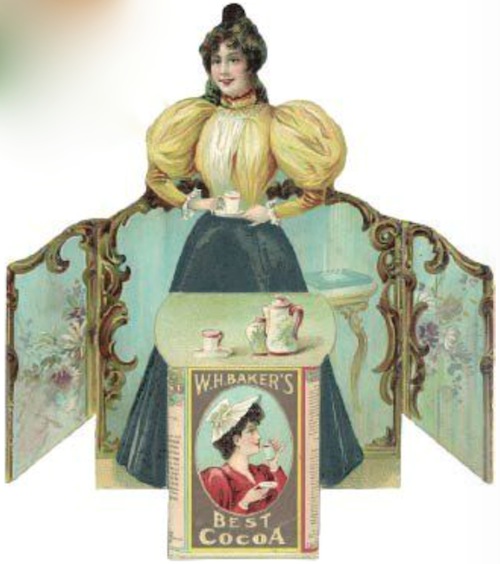 (Private Collection / The John Grossman Collection of Antique Images, Tucson, AZ)
(Private Collection / The John Grossman Collection of Antique Images, Tucson, AZ)
1773 – Politically-Incorrect Tea Leads to Patriotic Chocolate… when the Boston Tea Party shifts beverage consumption in New England & beyond towards hot cocoa. The Townshend Acts of 7 years prior were largely repealed except for a levy on tea imposed by the British Parliament in London against the consent of American Colonists. Revenues raised from it were earmarked for an independent judiciary. Colonists resented such taxation without representation. In reaction, members of the Sons of Liberty opened 342 chests filled with tea sitting aboard ships in the Boston Harbor & steeped their contents into frigid waters the night of December 16th.
1775 – Gen. George Washington regularly imbibes at Mt. Vernon & the State of Virginia makes chocolate a field ration for its Continental troops during the War of Independence. From the Pennsylvania Packetnewspaper reporting on Francis Daymon, a stockiest in Philadelphia: A very good assortments of MEDICINES, and the very best chocolate, already sweetened fit for the gentlemen of the army.
1785 – Thomas Jefferson, ever the agrarian aristocrat, augurs hot cocoa as the All-American draft. In a letter to his rival John Adams dated November 27, Jefferson predicts it will eventually eclipse coffee in American preferences due to the “superiority of chocolate, both for health & nourishment”.
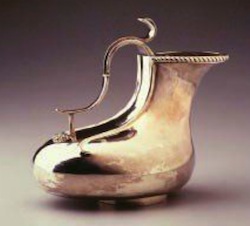 Thomas Jefferson’s silver chocolate pot modeled after an askos & cast by Anthony Simmons & Samuel Alexander
Thomas Jefferson’s silver chocolate pot modeled after an askos & cast by Anthony Simmons & Samuel Alexander
1789 – French Revolution ostensibly cleaves along the lines of coffee vs. cocoa – the coffee terrorists win-out over palace lackeys & sycophants who took cocoa as a morning beverage after Camille Desmoulins plots the assault on the Bastille from Café Foy, Paris, July 13
Early 1800s – advent of the chocolate Easter egg in Germany & France
1812 –  Napoleon rumored to carry chocolate during military campaigns. Because of its expense & luxury status, he commits the same faux pas as the ancien regime, that hoarded it amongst the privileged, by reserving it only for himself & senior officers. A deadly mistake in keeping with earlier French military rations given, for instance, to its Acadian militia at the Fortress of Louisbourg, Île Royale, Nouvelle-France (eastern Canada). His soldiers could’ve used its high-caloric energy values, especially during the doomed invasion of Russia where, to his chagrin, he discovered the truth behind his own maxim: “an army marches on its stomach”. Russians’ scorched-earth tactics force a bitter retreat during the biting winter that left his Grand Armée in tatters. As a consolation… Le Chocolat Napoleon– desert (as well as sex prank).
Napoleon rumored to carry chocolate during military campaigns. Because of its expense & luxury status, he commits the same faux pas as the ancien regime, that hoarded it amongst the privileged, by reserving it only for himself & senior officers. A deadly mistake in keeping with earlier French military rations given, for instance, to its Acadian militia at the Fortress of Louisbourg, Île Royale, Nouvelle-France (eastern Canada). His soldiers could’ve used its high-caloric energy values, especially during the doomed invasion of Russia where, to his chagrin, he discovered the truth behind his own maxim: “an army marches on its stomach”. Russians’ scorched-earth tactics force a bitter retreat during the biting winter that left his Grand Armée in tatters. As a consolation… Le Chocolat Napoleon– desert (as well as sex prank).
| 1816 – Menier, 1st chocolate factory | 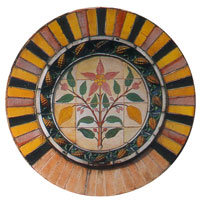 |
1822 – 1st successful cacáo transplant across the Atlantic from its New World homeland to the Old World after prior attempts failed – shipped from Espirito Santo, Brazil… arriving on Príncipe Island off the coast of Africa
1828– On April 4 Dutchman Coenraad Johannes van Houtem (right), a chemist working at his father Caspar’s chocolate mill, receives a patent (despite a patent examiner recommending the application be rejected) for a screw press to separate fat from roasted cacáo beans, leading to a cascade of further developments. Beans contain on average 53% cocoa butter. Though Mesoamericans had been extracting cacáo fat at least as early as the 1500s (in 1527 naturalist Gonzalo Fernández de Oviedo witnessed it among the Nicarao of Greater Nicoya [today Nicaragua / Costa Rica]; Bishop Landa mentioned in 1566 a grease or butter drawn from cacáo seeds in the Yucatán), Van Houten’s press was a quick, inexpensive method for reducing that by nearly half, creating a “cake” that could be pulverized into fine powder known as “cocoa”.
The bright light of this technological advance then cast a deceptively dark shadow when treated with alkaline salts (usually 1% to 7% potassium or sodium carbonates based upon weight of cocoa solids) to mix more easily with water. So easy that Van Houten’s promoted it “for the rich & poor – made instantly – easier than tea”.
This Dutch Process neutralizes the natural acids & removes bitterness found in cocoa, producing a darker color yet milder taste considered suitable for women & especially children, reflected equally in the image as much as the substance of cocoa. Severed are any direct connections of cacáo to sexual fertility & warrior strength, which predominated in pre-Columbian Mesoamerica. Instead, as historian Virginia Westbrook seconds, a Victorian sentimentality prevailed that exploited the cult status of childhood. Sweet images — of crawling babies, mommies with strollers, & kids sipping warm cocoa, some accompanied with pets or dolls — dominate.
In short, demilitarized & domesticated. Sanitized purity set the stage for the candy industry to come, & with them associations of simpering innocence & domestic tranquility that cacáo was unable to shake or live down until the 21st century when it started regaining its subversive edge.
This along with the wildly popular Hans Brinker; or, the Silver Skates: A Story of Life in Holland (a sort of Harry Potter of its day; from which springs the tale-within-a-tale about plugging a dike with a finger) created a fascination in American folklore with The Netherlands & made all things “Dutch” vogue. Though commonplace today, alkalized cocoa was once viewed, rather correctly, in the 1800s from Europe to America as a chemical adulterant that undermined cocoa’s nutritional value. The Walter Baker Company (see 1764/5 above) condemned alkalis & advertised against their use while guaranteeing the purity & excellence of its own product. In many respects, the modern craft chocolate movement (re: 1984 & later) returns chocolate to its pre-dutched character.
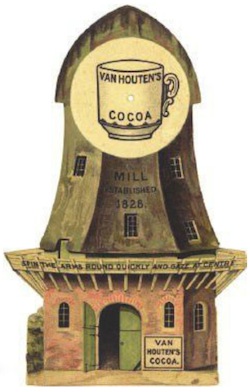 (Source: The American Antiquarian Society, Worcester, MA)
(Source: The American Antiquarian Society, Worcester, MA)
Chocolate Grinder Inside a Windmill (source: The Book of Chocolate, published by Flammarion, 1995)
 |
1830 – Goethe, polymath / universal genius, Faust author, makes a cult of cacáo: “Impossible to develop taste from what’s of mediocre quality; it can only be achieved from the very best… Act in the highest spirit.” (Portrait by Tischbein) |
1839-42 – Incidents of Travel, a series by Catherwood & Stephens, re-introduces the world to the ‘lost’ civilization of the Maya

In them the architectural complexity of the Maya finds instant recognition from Catherwood, a topographical draftsman as well as architect in his own right. He goes about capturing in meticulously detailed drawings several abandoned cities, by then mostly reclaimed, laying in ruins beneath the overgrowth. His lithographs belie the seeming permanence of those stone structures in sharp contrast with the surrounding forest, using camera lucid technique for near photo-realism quality imbued in the mood of a soft-Romanticism that was all the rage at the time. Meanwhile, the opportunistic Stephens writes of buying the entire stone city of Copán (in modern day Honduras) for $50 under the false hope of floating all of it downstream to… a museum somewhere. Emblematic of just how far the widening gap between the “civilized” & the “wild” spaces; that one would be dismantled & hauled away in crates only for re-assembly, to be recontext’d / repurposed for the whims of the other, on the grounds – often justified – of preservation (a perennial problem & polemic in art / museum circles right thru to the present).
1847 – Chocolate: The Bar… predominantly consumed in liquid draughts until the twin engines of invention & industrialization culminate in Fry & Sons of England transforming chocolate liquor into a solid bar although, presumably, this was not the absolute first (see entry for the year 1730 above)
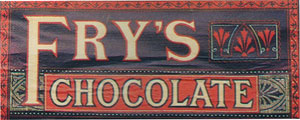
1860 – Ghirardelli imports beans from Peru to SF for sale to gold prospectors; works on extracting cacáo butter from ground cocoa to create a soluble cocoa powde
1865–
Gianduia: myth-making surrounds Michele Prochet combinating cocoa & toasted “Tonda Gentile delle Langhe” hazelnuts
The Broma Process happened upon by Domingo Ghirardelli, in which hanging a bag of chocolate in a warm room caused cacáo butter to drip out, extracting it at such an extremely slow rate that it’s rarely if ever used on any industrial scale
1868 – the “chocolate box”, Richard Cadbury (also the culprit of the heart-shaped box)
1875 – Milk Chocolate by Daniel Peter of Vevey, Switzerland mixing “pale cocoa” (still the best for milk, though most makers use regular cocoa requiring more milk) with Henri Nestlé’s condensed powdered milk

Rudolph Lindt opens factory & is the 1st to employ a conche machine which produces a smoother sensory experience for that modern standard of refined chocolate – the luscious molten meltdown — discovered by accident when his assistant left it running all night
successful introduction of cacáo onto the African mainland: Gold Coast (Ghana)
1880s– the Brownie, a cross between a cookie & a cake, can be traced back at least to an unnamed chef at the Palmer House Hotel in Chicago, IL who, at the request of the owners’s wife – a Mrs. Bertha Potter Palmer – asked for a “Ladies Dessert” that would be edible without besmirching her white-gloved fingers
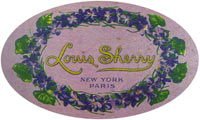 |
1881 – when it’s a matter of taste… Louis Sherry, The Gilded Age |
| 1893 – Wilbur Buds, forerunner to the Baci & Hershey’s Kiss | 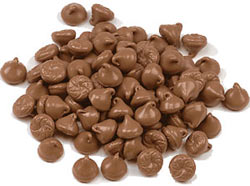 |
1895 – 1st Hershey’s bar
1898– ganache, Bernard Serardy, Moulin, France
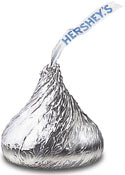 |
1907 – Perugina ‘Baci’ (kisses); Hershey’s Kiss – the A-bomb of all chocolate shapes, names, & marketing |  |
| 1908 – |  |
 |
1911 – Mars Company; Tacoma, WA |
1912–
Birth of the Belgian praline: Jean Neuhaus fills chocolate shells with cream, infused ganche, nut pastes, or other fillings; & his wife creates ballotin boxes of these treasures. (Kimmerle claims it was Swiss Jules Sechaud in 1913). Soon Leonidas matches & exceeds him by offering lower quality, cheaper chocolate
| Introduction of Whitman’s Sampler | 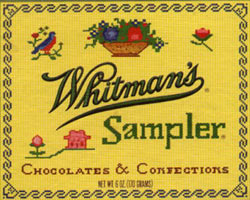 |
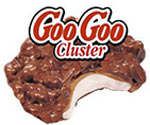 |
Combination Candy Bar; Tennessee makers of Goo Goo Clusters – the “official” candy bar of Dixie – mix peanuts, caramels, & marshmallows together & coat the concoction in milk chocolate |
Xmas Eve 1914 – chronicled in Stanley Weintraub’s Silent Night & later depicted in the film Joyeux Noël, German & British troops declare a de facto cease-fire to exchange carols & chocolate during the ‘Christmas Truce’, WWI, Ypres Belgium
| 1922 – H.B. Reese (of Reese’s™ Peanut Butter Cup fame) |  |
1923 — advent of the Milk Way bar
1925 – British archeologist Eric Thompson embarks on the long arduous trail to deciphering the Mayan system of writing that encompasses 1,000+ glyphs of script, under the tutelage of Mayanist Sylvanus Morley, while on honeymoon in the Yucatán (Mexico)
1926 – Godiva (Joseph Draps)
1927 – Lights -> Camera –> Action –> Sales… Take 1: debut of product-placement; Hershey’s Chocolate appears in the movie Wings about WWI air force pilots (1st film to win the Oscar for best picture; 1st to feature nudity; & 1st man-on-man kiss in cinema). Gary Cooper offers the hero, Buddy Rogers, a bar before flying off into aerial battle. Being a silent film serves to amplify the hand-off & further heighten it. Rogers survives; Cooper dies. Ruminate on the subliminal message.
 Two frames just minutes apart appearing early in the movie “Wings”; one shows the front of a bar, the other the flipside, both against a contrasting pair of white socks; together they drive home the message ‘Chocolate = Hershey’s’
Two frames just minutes apart appearing early in the movie “Wings”; one shows the front of a bar, the other the flipside, both against a contrasting pair of white socks; together they drive home the message ‘Chocolate = Hershey’s’
1929 – El Rey, the grand monarch of local production, processing, & packaging… all done in a country – Venezuela – where cacáo grows instead of shipping its beans to Europe or North America for refining
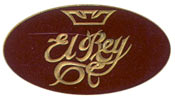
1930–
Cocoa Research Unit established at the Imperial College of Tropical Agriculture in Trinidad which, in conjunction with the Int’l Cocoa Genebank, forms part of the University of the West Indies
 |
Chocolate Chip Cookie; Ruth Wakefield, proprietor of the Toll House Inn (New Bedford, MA) runs out of baking chocolate so she adds chunks of a Nestlé’s bar to her cookie dough | 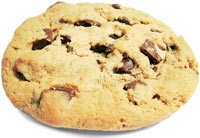 |
1930s – White Chocolate called Galak introduced by Nestlé’s
1933–
| Class tries to stage its comeback: Jean Harlow feeds her vanity & loneliness in Dinner at 8 | 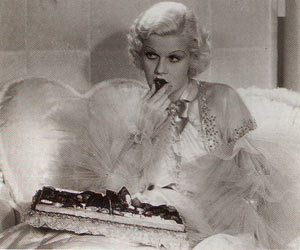 |
1935 –  1937 – The smell of victory…. chocolate. In the long tradition of military-chocolate spanning back centuries to Mesoamerican warriors, U.S. Army Quartermaster Col. Paul Logan, sensing the winds of war, approaches Hershey’s chief chemist Sam Hinkle.
1937 – The smell of victory…. chocolate. In the long tradition of military-chocolate spanning back centuries to Mesoamerican warriors, U.S. Army Quartermaster Col. Paul Logan, sensing the winds of war, approaches Hershey’s chief chemist Sam Hinkle.  The original ‘melts in your mouth, not in your hands’ (candy-coated M&Ms™ were introduced years later), the D-Ration Bar is mobilized & sent into WWII as EMS survival fare during extreme battle conditions. Heat-resistant, it reaches a melting point around 120ºF – some 25 or so degrees higher than usual. To seal the deal, it comes in a poison-gas proof wrapper! Important as any weapon, one bar supplied 100% of a soldier’s daily calories – 2,830 – all that was necessary to energize the troops & boost morale. But so diluted (the main ingredient oat flour) the D-Ration Bar ironically demilitarizes & purges cacáo of its powers. The prolific mutilation & denigration of a once potent force that sets in motion ever more mass-production candy to follow, coupled with media associations of childish sentimentality & schmaltz romance.
The original ‘melts in your mouth, not in your hands’ (candy-coated M&Ms™ were introduced years later), the D-Ration Bar is mobilized & sent into WWII as EMS survival fare during extreme battle conditions. Heat-resistant, it reaches a melting point around 120ºF – some 25 or so degrees higher than usual. To seal the deal, it comes in a poison-gas proof wrapper! Important as any weapon, one bar supplied 100% of a soldier’s daily calories – 2,830 – all that was necessary to energize the troops & boost morale. But so diluted (the main ingredient oat flour) the D-Ration Bar ironically demilitarizes & purges cacáo of its powers. The prolific mutilation & denigration of a once potent force that sets in motion ever more mass-production candy to follow, coupled with media associations of childish sentimentality & schmaltz romance.
1937-38 – Amazon Jungle Expedition by FJ Pound in search of disease-resistant cacáo trees
| 1938 – Nestlé’s Crunch | 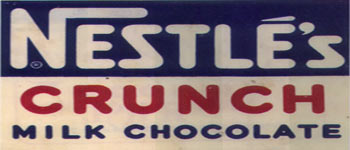 |
1940s– supercrema gianduia in Alba, Italy by Pietro Ferrero who did a “smearing” on bread for kids; morphs into Nutella in 1964
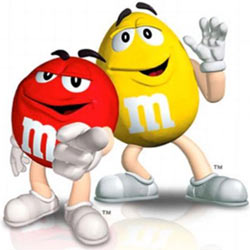 |
1941 – M&Ms (named after Forrest Mars & R. Bruce Murrie, son of former Hershey’s president William Murrie) ‘shell-shock’ American soldiers. Inspired by lentil-shaped chocolates protected by a hard sugar-glazed shell eaten in the Spanish Civil War so it ‘melts in your mouth… not in your hands’. Actually, explodes the mouth. And because they never satiate like real chocolate, M&Ms™ provoke a feeding frenzy where humans graze out on ’em all day long. Millions per hour rumble off the Mars’ assembly lines, exclusively earmarked for the U.S. military, immunizing American GIs to the shell-shocks of WWII. |
1944 – groundbreaking work by EE Chessman on cacáo classification to help solve its origin & relationships puzzle; prophesied the center of origin, later confirmed, at the confluence of the rivers Napo, Caquetá, & Putumayo leading to the Amazon River, in the cross-border area of present-day Peru, Colombia, & Ecuador.
1945 – ‘Melts in your pants, not in your hands’: British scientists Randall & Boot investigate properties of a vacuum cavity based on designs of German engineer Hans Hollman. Called the Magnatron, this tube converts high voltage electrical energy into microwave radiation for higher frequency signals that can bounce off objects, creating a shadow, making them “visible” to detection. In a word: radar. Perfect for spotting even the periscope of Nazi U-boat submarines prowling England’s shores. Due to budgetary constraints, British intelligence hands over the technology to the Americans. Percy LaBaron Spencer of Raytheon Corp USA, standing near a Magnatron with a chocolate bar in his pocket, feels it melt in his pants… the accidental discovery of the microwave oven.
1948-49 – The Candy Bomber in Operation Little Vittles: US Air Force Col. Gail Halverson (nicknamed Uncle Wiggly-Wings) vs. USSR General Secretary Josef Stalin (aka Uncle Joe) Fearing Dollar-Diplomacy & a strong Germany would act as a counterweight to the USSR, Gen. Sec. Josef Stalin wants that country under his heel, especially one which inflicted so many casualties & so much pain in WWII (20 million Soviet dead). Hence, the Berlin Blockage – the first chill in the 40-year ‘Cold War’.
Western Allies respond to the emergency by airlifting food & provisions to the citizens of Berlin. 
Morale stays low, however, until one pilot – USAF Col. Gail Halverson – drops chocolate bars attached to handkerchief parachutes out of his C-47 cockpit for kids waiting trapped in the city below. Because planes arrive every 90 seconds, they’ve no idea which one is his, so Col. Halverson signals them by ‘wiggling his wings’, or rocking the aircraft. For every day thereafter their numbers increase until a quarter million mini-parachutes “bomb” the entire city.
Germans affectionately nickname the candy-bomber ‘Onkel Wackelflügel’ (Uncle Wiggly Wings), pitting him against dreaded Soviet dictator ‘Uncle Joe’ Stalin in a war of blinksmanship.
By the following Spring, chocolate scores a propaganda coup, helping win the hearts & minds of embattled Eastern Europeans, especially heartwarming since European chocolate factories were still recovering from WWII.
Animosities between Germans & the Western Allies were greatly reduced by the airlift, with former enemies recognizing common interests & shared values. From ‘Down goes the Dictator; Victory to the Candy Bomber’ to “Ich bein Berliner” & “Tear Down that Wall”, Germany eventually re-united. They awarded Col. Halverson their highest honor – the Grand Cross of the Republic – & granted him the privilege of carrying that nation’s placard into the opening ceremonies of the 2002 Olympic Games.
A far cry from the treatment he received during the airlift from a youngster named Peter Zimmerman. Hoping to avoid the scramble with other kids at the airport, Zimmerman asked the pilot to aim the chocolate right in his backyard. He wrote this letter guide to Col. Halverson: “Fly along the big canal… at the second bridge turn right. I live in the bombed out house on the corner. I’ll be in the backyard everyday at 2PM. Drop it there”. When his chocolate failed to arrive, he wrote again, “You are a pilot? I gave you a map? How did you guys win the war anyway?”
Late 1940s — Last of the Chocolate Pots? 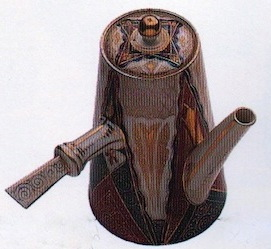
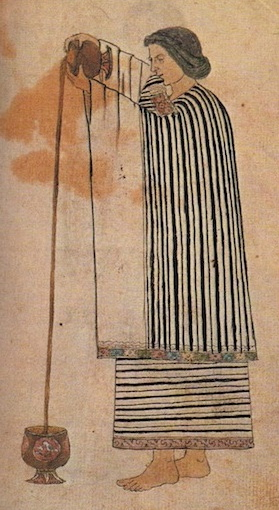 Chocolate vessels had been a fixture in homes in America for millenia & in Europe for centuries. Typically bulbous at the base with an opening on the lid in the later models thru which a Molinillo could be slid in & down for stirring up a ‘commotion in a chocolate pot’ in order to dissolve cacáo in water. This action moreover created desirable frothy bubbles — an effect ancient Mesoamericans achieved by pouring the liquid from a height:
Chocolate vessels had been a fixture in homes in America for millenia & in Europe for centuries. Typically bulbous at the base with an opening on the lid in the later models thru which a Molinillo could be slid in & down for stirring up a ‘commotion in a chocolate pot’ in order to dissolve cacáo in water. This action moreover created desirable frothy bubbles — an effect ancient Mesoamericans achieved by pouring the liquid from a height:
These seeds, which they call almonds or cacao, are ground & made into powder, & some other small seeds they have are also ground, & the powder put into ceramic vessels shaped with a spout. They then add water & stir with a spoon, & after it is well-mixed they pour it back & forth from one vessel to another until it’s foamy. The foam is gathered & put into a cup, & when they are ready to drink the beverage they agitate it with some small spoons made of gold, or silver or wood. To drink one must open the mouth wide since it has a froth so it’s necessary to make room for it to dissolve & so go in gradually. — From The Narrative of Some Things of New Spain & of the Great City of Temestitan, México… one of the earliest recipes documented by a European for the preparation of chocolate.
Indeed, the very act of preparing their cacáo, almost invariably by women, was a social performance mimicking intercourse: pouring it from a height well off the ground to stimulate a foam head represented the phallus & the ensuing froth equaled orgasm, a sacred transformation parallel to floods of destruction & creation. Once Dutchman Coenraad Johannes van Houten patented the screw press, however, for separating fat from roasted cacáo beans in 1928, the resulting cocoa powder made it more soluble in water. It no longer needed constant stirring, making the specialized pots unnecessary. Van Houten’s process led to a cascade of future developments that would see the solid chocolate bar gain in popularity, replacing liquid chocolate beverages which eventually became unfashionable & fell out of favor. Additional shifts in consumption patterns post-WWII sealed their fate. Just as visual art shifted from pastoral landscapes, still life & narrated scenery to Abstract Expressionism, so too sensory tastes. Mass-production, speed & scale, jet transport & logistics… the accelerated pace of modern life brought convenience stores & fast-food chains. In such a time-warp who has the leisure – the luxury really – to make a proper draft of chocolate? So soon the ubiquity of the nickel candy bar all but killed it.
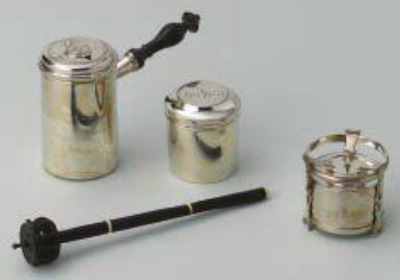 Marie Antoinette’s silver chocolatière set (Museum Accession #OA 9594; Réunion des Musées Nationaux) with the black moulinet (French for the Spanish ‘molinillo’) or stirring rod lying in the foreground
Marie Antoinette’s silver chocolatière set (Museum Accession #OA 9594; Réunion des Musées Nationaux) with the black moulinet (French for the Spanish ‘molinillo’) or stirring rod lying in the foreground
Wishing to flee the French Revolution engulfing the King & their family, she ordered a nécessaire de voyage for the journey in 1791 — a 100-piece service ware made of precious metals, porcelain, crystal & ivory, including a silver chocolatière, or chocolate pot, marked with the Queen’s monogram ‘MA’. Could the extra load bear responsibility for their foiled escape? And did this signify that chocolate, long the realm of the aristocracy, switched sides for the people? In any event, legend has it that eventually the ‘MA chocolatière’ ended up in the hands of Napolean who reportedly gave it to his wife Josephine. Oh, what that pot has stirred & heard from its beholders. 1952–
The Anglo-Colombian Cacao Collecting Expedition conducts an important survey of a wild region, mainly within Colombia’s borders, that exhibits great diversity
Basil Bartley, among the last of the great explorers, sets-off on a half-century trek thru the Amazon Rainforest researching Theobroma cacáo
 A taste of what it takes to find cacáo in the jungle: Basil Bartley & team members on one of their expeditions in the Amazon
A taste of what it takes to find cacáo in the jungle: Basil Bartley & team members on one of their expeditions in the Amazon
********************
Piecing together clues from various sources traced back to Bishop Diego de Landa’s Relación de las cosas de Yucatán (c. 1566)… & before, Russian linguist Yuri Knorosov reasons that the Maya writing system contains too many glyphs for an alphabet & too few to be logograms; postulates instead a combination of phonetics & word signs
********************
Mass Goes Crass… I Love Lucy – “Job Switching” episode: Ricky & Fred think housework is easier than holding down a job. Lucy & Ethel feel the opposite. They all trade places. Naturally all 4 fail at their chores. Lucy & Ethel make a mess of Kramer’s Kandy Kitchen. A speeding conveyor belt has them stuffing chocolates in their mouths & blouses trying to keep up in vain. Show wraps with them sick to their stomachs on so much chocolate as the reunited husbands ‘n wives find newfound respect for each other’s lot in life, followed by a classic ending with Ricky & Fred hoping to come good by gifting the ladies with a 5 lb. box of… what else, chocolate.
 Stuffin’ those Bonbons
Stuffin’ those Bonbons
1953–
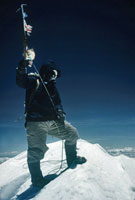 Chocolate on the Roof of the World – Sherpa mountaineer Tenzig Norgay climbs with Sir Edmond Hillary on the first known ascent of Mt. Everest where he leaves behind a ceremonial chocolate offering… never, presumably, to melt at this the highest altitude on Earth
Chocolate on the Roof of the World – Sherpa mountaineer Tenzig Norgay climbs with Sir Edmond Hillary on the first known ascent of Mt. Everest where he leaves behind a ceremonial chocolate offering… never, presumably, to melt at this the highest altitude on Earth
Maurice Bernachon, Lyon France; the prototype for chocolate micro-processors
René Millon’s dissertation at Columbia University, When Money Grew on Trees, anticipates the revival in cacáo scholarship by decades
1958 – Tatiana Proskouriakoff renders architectural drawings of Classic Mayan ruins at Yo’k’ib’ (Piedras Negras, Petén, Guatemala) as well as other sites with X-ray vision & detects a pattern among commemorative stone monuments called tetun (Mayan for ‘tree-stones’ or stelae) carved with hieroglyphic texts that for the 1st time are understood to relate the story of Mayan Royal Dynasties describing their genealogy, military conquest(s) & other landmark events – a vital stepping-stone to cracking the Mayan code. Following her death in 1985, she is buried among the remains at Group F.
 Xpuhil – Then & Now: Mayan archeological site in present day Campeche, Mexico dating perhaps to 400BCE; (top) Tatiana Proskouriakoff’s reconstruction drawing; (middle) the forest reclaiming it in 1938; (bottom) cleared of overgrowth today
Xpuhil – Then & Now: Mayan archeological site in present day Campeche, Mexico dating perhaps to 400BCE; (top) Tatiana Proskouriakoff’s reconstruction drawing; (middle) the forest reclaiming it in 1938; (bottom) cleared of overgrowth today
1960 – Hitchcock’s Psycho: chocolate simulates blood in the famous shower scene featuring Janet Leigh, hearkening back to Mesoamerican Toxcatl Festivals, human sacrifice, & symbolic notions of ‘Hearts ‘n Blood’

1971 – Chocolate lands on the moon with the crew aboard the Apollo 15 mission
1973 –
Linda Schele & Peter Matthews codify Mayan glyphs at Palenque / B’aakal (Mexico), leading to the first dynastic list of any Mayan state as well as positive identification of Ajaw (King) K’inich Janaab’ Pakal’s tomb (d. 683CE) deep within the Temple of Inscriptions pyramid. Along with earlier works of Proskouriakoff & others, this accelerates further research into Mayan iconography & a rebirth in effect of a perished civilization that placed cacáo at its very center.

 Much of this scholarship crystallizes in the tomb of Ajaw Pakal itself, equipped with its unique psychoduct (a hollow tube) that leads from the burial chamber up the stairway & thru a hole in the stone covering over the entrance. Standing on the outside, on what archeologists call Pier C, appears to be a woman whom many view as Queen Zac K’uk’ – Pakal’s mother. The psychoduct runs symbolic of both an umbilical cord connecting the royal bloodline & physical support for the soul’s departure at death, amplified by the accompanying inscription ochb’ihaj sak ik’il (The White Breath Road-Entered).
Much of this scholarship crystallizes in the tomb of Ajaw Pakal itself, equipped with its unique psychoduct (a hollow tube) that leads from the burial chamber up the stairway & thru a hole in the stone covering over the entrance. Standing on the outside, on what archeologists call Pier C, appears to be a woman whom many view as Queen Zac K’uk’ – Pakal’s mother. The psychoduct runs symbolic of both an umbilical cord connecting the royal bloodline & physical support for the soul’s departure at death, amplified by the accompanying inscription ochb’ihaj sak ik’il (The White Breath Road-Entered).
 Vaulted crypt housing King Pakal’s sarcophagus supports the immense weight of the Teocalli (temple pyramid) above, a sacred Vegas envisioned by artist-turned-Mayan-scholar Merle Greene Robertson, resplendent with illumination & surreal plumage for showgirls
Vaulted crypt housing King Pakal’s sarcophagus supports the immense weight of the Teocalli (temple pyramid) above, a sacred Vegas envisioned by artist-turned-Mayan-scholar Merle Greene Robertson, resplendent with illumination & surreal plumage for showgirls
Yale anthropologist Michael Coe recognizes the PSS (Primary Standard Sequence) of Mayan glyphs – a dedicatory pattern or signature adorning ceramic vessels
 PSS for ‘Foamy Kakaw’ (chocolate) from a vessel photographed by Justin Kerr
PSS for ‘Foamy Kakaw’ (chocolate) from a vessel photographed by Justin Kerr
1981 – Harvard epigrapher David Stuart turns the final key in unlocking the Mayan code to decipher the tapestry of glyphs carved on walls & painted on pottery by scribes telling the story of a once-lost & now re-found civilization
1982 – ET’s Favorite Candy Game-changer: Steven Spielberg & Universal Studios™ approach Mars™ for permission to use M&M’s™ in a pivotal movie scene between a 9 year-old kid & a space alien. The suits blow him off with characteristic ‘seagull mgmt’ – swoop down, poop, & fly away. Spielberg then asks Hershey’s™, & a quick-thinking ad exec, Jack Dowd, seals a top-secret deal for Reese’s Pieces™ instead — without ever seeing a script or even pictures of the cast beforehand.
The gamble (could’ve been a fright-night plot of an inter-galactic python eats boy) pays off.
9 year-old befriends little green monster by luring it out of the woods & into the house with… what else, a trail of chocolate.
Spielberg re-paid the favor huge with a crackling soundtrack of E.T. munching on Reese’s™.
Even those who couldn’t get in to see the film – lines snaked around the block – at least could say they stood in line & ate ‘E.T.’s Favorite Candy’. Inside, audiences bolt from their seats for the concessions. Sales of Reese’s™ skyrocket & continued to fly off the shelves.
The phenomenon ignites an explosion in future product placement strategies & affiliated marketing: Mission from Mars™ at Disney™; Chevy Camero in Transformers; Wall-E & Apple Computer; M&M’s™ ‘mPire’ promo with Star Wars Episode III: Revenge of the Sith… just to cite a few.
In general, product placement becomes so ubiquitous & over-the-top it spawns its own subgenre (e.g., the mockumentary Best in Show). Dowd calls the E.T.- Reese’s™ tie-in “the biggest marketing coup” in history, estimating $20 million worth of free advertising. In truth it was priceless… before MasterCard.
Impossible to buy that; people still talk about it today.
1984 –
“The Chocolate Pot” – the Rosetta Stone of cacáo – discovered in Tomb 19 at Rio Azul (Guatemala; its Mayan name Sak Há Witznal meaning ‘Clear Water Mountain’) by REW Adams; a lock-top vessel dating to circa 455 – 465 CE. Vessels were labor-intensive arts & crafts; among the most important valuables a Mesoamerican owned, stamped with their personal insignia. The Chocolate Pot’s historical magnitude resides in: a) first vessel analyzed with ancient cacáo residue; b) Mayan glyphic inscription proclaiming its contents of two types of cacáo (one perhaps being Theobroma bicolor?); & c) pure prima facie beauty.
 (above) – Rio Azul Chocolate Pot (glyph for cacáo at left on vessel lid; color courtesy of Denver Museum of Natural History; B&W, George Stuart); (below) – both cacáo glyphs that adorn the Chocolate Pot (drawings by David Stuart) followed by a phonetic deconstruction
(above) – Rio Azul Chocolate Pot (glyph for cacáo at left on vessel lid; color courtesy of Denver Museum of Natural History; B&W, George Stuart); (below) – both cacáo glyphs that adorn the Chocolate Pot (drawings by David Stuart) followed by a phonetic deconstruction

Variations of Cacáo Glyphs Painted on Other Pottery Include a Host of Mixed Drinks:

YUTAL KAKAW (generally translated ‘fruity cacáo’) – the most common PSS inscription on Classic Maya vessels

SUUTZ KAKAW – capulin (Prunus serotina) or black cherry

TZAH KAKAW – sweet cacáo

SA’AL KAKAW – gruel-ish chocolate (probably corn + cacáo)
********************
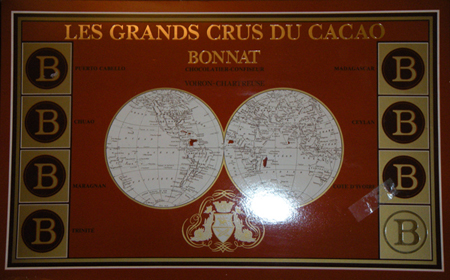
In celebration of its centennial anniversary, Bonnat christens the named-origin concept decades after actually giving birth to it with Mappemonde containing 7 origin chocolates (Puerto Cabello, Chuao [both Venezuela], Maragnan [Brazil], Trinidad, Madagascar, Ceylon, & Côte d’Ivoire. What was expected to be a short-lived commemorative edition turns into a long-term phenomenon – the precursor & inspiration for Valrhona’s Grand Cru line to follow:
1985 – the 3rd wave of chocolate history in the West begins in earnest with Valrhona’s release of Guanaja – the godfather of contemporary premium chocolate that triggers a re-calibration toward stronger potency & its marketing based on the groundbreaking work of Bonnat &, to a degree, Cluizel’s initial “1er” releases
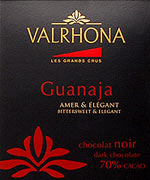
1986 – Blood of Kings; Kimball Art Museum, Forth Worth, TX; landmark exhibit & scholastic breakthrough curated by Linda Schele & Mary Miller sweeps away the naïve romance of Maya as mystic astronomers & peaceful mathematicians; instead shedding new light on a civilization replete with wars, dynastic struggles, shifting political alliances & real people of character with worldviews as complicated, colorful & conflicted as their European or Asian opposites. Whether in paintings, sculpture, ceramics, script or religion, cacáo figures prominently in this culture.
1994 –
Bonnat launches the ‘single-origin’ estate bar – Hacienda el Rosario
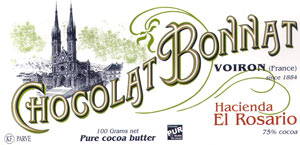
El Rey releases the Carenero Superior line of bars as a varietal denomination
1995 – Gianluca Franzoni, a/k/a Mack Domori, the Magister Ludi of cacáo
1996 – Publication of The True History of Chocolate by Sophie & Michael Coe, a seminal work & scholastic watershed
1997 – founding of Scharffen Berger, retro-pioneer of the New American Craft Chocolate movement
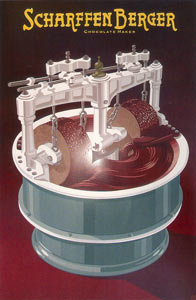
Claudio Corallo on Príncipe Island revives an ancient Mesoamerican tradition of Bud-to-Bud™ chocolate (cacáo flower bud to human taste bud) for the global market based on a vintner model of vertical integration, all in situ, growing a cultivar which coincidentally may count among its trees some descendants of the original 1822 Amelonado– that, the first successful cacáo transplanted across the Atlantic from its New World home to the Old World
1998 – Valrhona Gran Couva – single-estate vintage chocolate
2000 – Chuao becomes 1st cacáo-growing region to be legally protected as a producer of named-origin beans or R.O.C. (Region of Origin Certified)
2001 –
Publication of The New Taste of Chocolate by Maricel Presilla popularizes cacáo as the great botanical tree that it is, instead of just a marketable commodity; & its derivative – chocolate – as a complex delicacy rather than a simple candy
Chocolate can save the Rainforest, a report by Chris Bright of WorldWatch, recasts Theobroma cacao in the light of a leading strategic asset for sustainable ecology
2003 – Chocolate Smuggled Upmarket: capitalizing on the rising value of what was once just slumming, 70%.com launches into the contemporary chocolate scene, promoting the establishment of newer spaces – from other websites & blogs to tasting-clubs & parleys – for discussion & consideration of “what’s up” & current in the world of chocolate
2005 – micro-processor retro-revolution is on – De Vries, Patric, Rogue … list keeps growing & going…
2008–
mapping the cacáo genome (approximately 400 million base pairs) accelerates
Dr. Juan Carlos Motamayor reclassifies cacáo’s taxonomy from a crude scheme of Forastero / Criollo / Trintiario to a refined system inclusive of manifold subclusters that more accurately delineate its broader genetic diversity
2009 – What’s Ancient Becomes Modern Again: Marañón Canyon Cacao recovers — & geneticists confirm — what La Condamine in 1745, Pound in 1938 & Bartley in 2005 had all previously documented, namely, “Ecuador Arriba Nacional” growing at its possible source of origin… in Peru!
2010 – the C-spot® 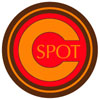
Unveiling at the Smithsonian Institution
2010-11 – The Lab Science of Chocolate: Theobroma cacáo Genome Sequence for Criollo assembled by a consortium representing CIRAD, CEPLAC, Penn State University, et al., that includes, among others, Mark Guiltinan, Siela Maximova & Claire Lanuad. Mars releases a corresponding sequence for the Amazon variety
2012 – The Crushing End of Chocolate? True History of Chocolate author & preeminent Mayanist Dr. Michael Coe spawns the 2012 Deadline – back in 1966 – when he relayed that the Mayan calendar resets its odometer clock in reaching the end of a 144,000-day cycle called a b’ak’tun(roughly 394 years). Then, in a Nietzschean-like ‘eternal recurrence’, this wheel of time rewinds in sync with their cyclical nature of it. Picked up since by the likes of Terence McKenna, Novelty Theorists, Timewave Zeros, & now a galactic-laxative in the mufti-science called ‘New Age’ as a scenario for a doomsday shift, 2012 could ruin chocolate as we know it (not to mention your whole day).
Everything goes, everything comes back; eternally rolls the wheel of being. Everything dies, everything blossoms again. . . . — Friedrich Nietzsche, Thus Spoke Zarathustra

“Creation Vase of the 7 Gods” (found at Naranjo & now housed in the Nat’l Museum of Archaeology, Guatemala) discusses the beginning & end of this Epoch which implicates an Armageddon-type deity — the underworld warlord Bolon Yookte’ K’uh, set to rock the planet on December 21, 2012 — a new day that could live in infamy. The accompanying script narrates “on 4 Ahaw 8 Kumk’u it was set in order: Black-is-its-Center” (Chan Ahaw Waxak Kumk’u tzakhi Ek’-u-Tan). The named location – Ek’-u-Tan – refers to the universe in a blacked-out state as the Sky awaits to be lifted away from the Primordial Sea.
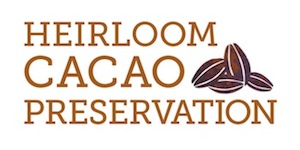 2014 – The Heirloom Cacao Preservation initiative (HCP), a public-private collaboration between the Fine Chocolate Industry Association & the USDA, designate the first-ever such cacáos on February 11 in NYC — 2 from Bolivia (Heirlooms I & II), 1 from Ecuador (Heirloom III) &, surprise, Hawai’i (Heirloom IV) — amidst a growing concern that chocolate is endangered because it’s tasting more & more like wax these days.
2014 – The Heirloom Cacao Preservation initiative (HCP), a public-private collaboration between the Fine Chocolate Industry Association & the USDA, designate the first-ever such cacáos on February 11 in NYC — 2 from Bolivia (Heirlooms I & II), 1 from Ecuador (Heirloom III) &, surprise, Hawai’i (Heirloom IV) — amidst a growing concern that chocolate is endangered because it’s tasting more & more like wax these days.
Great chocolate starts with the finer Theobroma cacao trees. But those trees are poised for extinction. They’re being crowded out by the vast majority of other cacáo trees – 95% — which are bland, bulk-grade. As this bulk continues to encroach on the other 5% — prized as fine-flavored — at an alarming rate, a world of boring chocolate awaits.
Gary Guittard, President of the Guittard Chocolate Company: “The pioneering work of the HCP is an important tool in the global effort to promote sustainability”
FULL DISCLOSURE: the C-spot® is a Founding Circle Member of the HCP & its editor the Director of the HCP Fund
2016-17 – a potential watershed in the long & storied history of chocolate…
 Members of the C-spot™ along with supporting partners organize Landmark Wild Chocolate Reserve™ to locate & safeguard the original heirloom varietals – the crown jewels / rock stars – of chocolate, while conserving the Amazon Rainforest &, by extension, the whole planet.
Members of the C-spot™ along with supporting partners organize Landmark Wild Chocolate Reserve™ to locate & safeguard the original heirloom varietals – the crown jewels / rock stars – of chocolate, while conserving the Amazon Rainforest &, by extension, the whole planet.
Time is of the essence to save these trees because they’re vanishing, day-by-day. And with them, botanical treasures could be lost forever unless protected.
The Washington Post’s article on Landmark notes that “Wild bars… tie flavor to conservation. People are hungry for authenticity in what they’re eating.”
Landmark Wild Chocolate Reserve™ represents a crucial innovation to map high-flavor cacáo trees & connect those flavor traits which make for the best chocolates to the trees’ underlying genetic code. A quest the C-spot® has pursued organileptically since its inception (with by far the most comprehensive open-source database on cacáo genotypes as they relate to premium chocolate flavor). Now that quest can be advanced via this systematic network.
MAJOR SOURCES (via Personal Communication):
- Dr. Basil Bartley, CEPEC Genebank (Brazil)
- Prof. Rosemary Joyce, UC Berkeley
- Prof. Emeritus Michael Coe, Yale
- Prof. Cameron McNeil, author
- Prof. Marcy Norton, George Washington University
- Dr. Dapeng Zhang, geneticist, USDA ARS
- Dr. Juan Carlos Motamayor, geneticist, Mars Inc.





